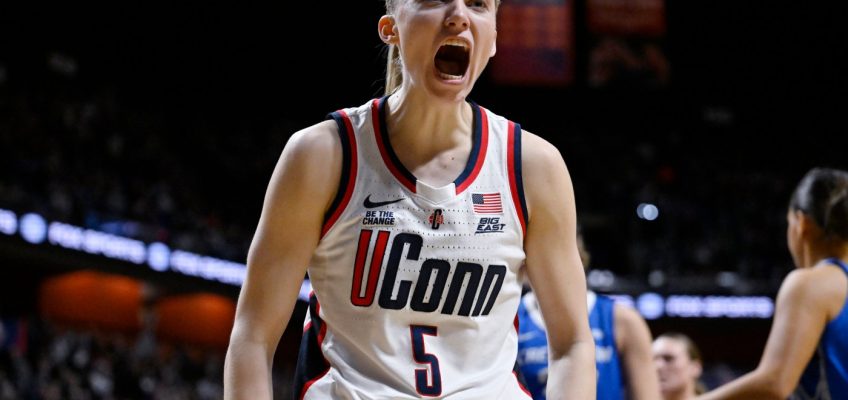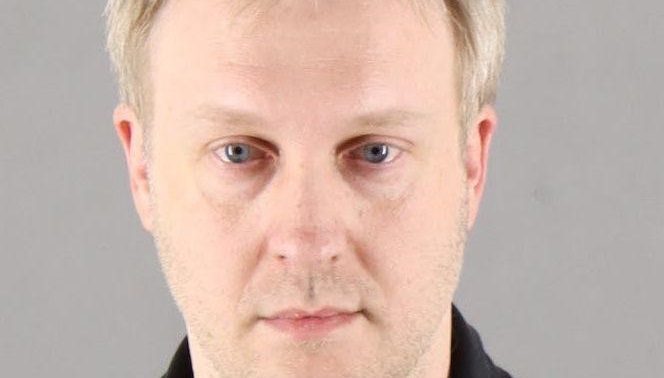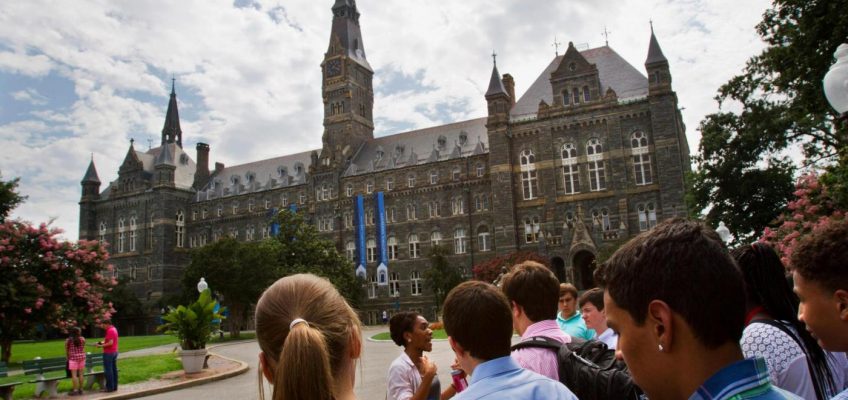It’s officially March Madness and this is the last chance for Hopkins graduate Paige Bueckers to win that elusive national championship. She’s done pretty much everything else during her time at UConn.
Though she’s by far the biggest name of the bunch, Bueckers isn’t the only player from Minnesota that will be competing in March Madness.
Not by a long shot.
Here are all the Minnesotans competing in this year’s NCAA women’s basketball tournament:
Tessa Johnson, No. 1 seed South Carolina, St. Michael-Albertville: She is a very important piece off the bench for the defending national champion Gamecocks.
Paige Bueckers, No. 2 seed UConn, Hopkins: As the straw that stirs the drink for the Huskies, she has been stuffing the stat sheet, averaging 19.0 points, 4.5 rebounds, and 4.9 assists.
Natalie Mazurek, No. 2 seed TCU, Eden Prairie: She has only appeared in 13 games so far for the Horned Frogs.
Alyssa Ustby, No. 3 seed North Carolina, Rochester Lourdes: She has been very effective in the paint for the Tar Heels, averaging 10.6 points and 9.5 rebounds.
Jordan Zubich, No. 3 seed North Carolina, Mountain Iron-Buhl: She is not a part of the rotation for the Tar Heels at this point in her career.
Liza Karlen, No. 3 seed Notre Dame, Stillwater: After transferring to the Fighting Irish, she has earned her playing time on a team capable of making noise.
Ayoka Lee, No. 5 seed Kansas State, Byron: As the leader of the Wildcats, she is averaging 15.5 points and 6.1 rebounds.
Finley Ohnstad, No. 5 seed Kansas State, Lakeville South: She appears to be redshirting for the Wildcats.
Olivia Olson, No. 6 seed Michigan, Benilde St. Margaret’s: In her first year on campus, she has been a godsend for the Wolverines, averaging 16.2 points to lead all scorers.
Trinity Wilson, No. 7 seed Vanderbilt, Lakeville North: She has played sparingly for the Commodores.
Gianna Kneepkens, No. 8 seed Utah, Duluth Marshall: The leading scorer for the Utes is averaging 19.2 points, 5.1 rebounds, and 3.1 assists.
Jenna Johnson, No. 8 seed Utah, Wayzata: She has started every game for the Utes and has found a variety of ways to contribute.
Adalia McKenzie, No. 8 seed Illinois, Park Center: She is a veteran presence for the Illini in the backcourt, which is always crucial when the pressure gets ramped up.
Lilly Meister, No. 9 seed Indiana, Rochester John Marshall: Since stepping into the starting lineup for the Hoosiers, she has carved out a niche for herself.
Lauren Jensen, No. 9 seed Creighton, Lakeville North: As the leader for the Blue Jays both on and off the court, she is as valuable to her team as anybody in the nation.
Molly Mogensen, No. 9 seed Creighton, Farmington: She is averaging 9.3 points, 5.0 rebounds, and 3.9 assists for the Blue Jays.
Mallory Brake, No. 9 seed Creighton, Hastings: She has started every game for the Blue Jays and has done all the dirty work down low.
Kiani Lockett, No. 9 seed Creighton, Minnetonka: After seeing her playing time steadily increase throughout her career, she has stepped into the starting lineup for the Blue Jays.
Paige Meyer, No. 10 seed South Dakota State, Albany: She is the engine for the Jackrabbits on offense, averaging 12.0 points and 5.3 assists.
Kallie Theisen, No. 10 seed South Dakota State, Wayzata: She contributes with some useful minutes off the bench for the Jackrabbits.
Madison Mathiowetz, No. 10 seed South Dakota State, St. Mary’s: She has started every game for the Jackrabbits and has averaged 8.7 points and 3.6 rebounds.
Ellie Colbeck, No. 10 seed South Dakota State, Fergus Falls: There has not been much playing time for her so far with the Jackrabbits.
Callin Hake, No. 10 seed Nebraska, Chanhassen: She does a little bit of everything for the Cornhuskers, averaging 6.6 points 3.0 rebounds, and 3.1 assists.
Kendall Coley, No. 10 seed Nebraska, St. Louis Park: She enters the tournament tied for second in Nebraska women’s basketball history with 136 career games played.
Jenna Guyer, No. 12 seed Green Bay, Centennial: She has been a spark plug off the bench throughout her career with the Phoenix.
Miah Meyer, No. 12 seed Green Bay, Glencoe-Silver Lake: After transferring to the Phoenix, she has established herself as a part of the rotation.
Maren Westin, No. 12 seed Green Bay, Becker: As she gains more experience at the next level, she has been exclusively used as a reserve for the Phoenix.
Ellie Buzzelle, No. 12 seed Green Bay, Rogers: After transferring to the Phoenix, she has yet to find a role on the court.
Sophie Lahti, No. 12 seed Green Bay, Pine City: She has played sparingly during her first year on campus.
Amy Thompson, No. 12 seed South Florida, Stillwater: She is still in the development phase of her career with the Bulls.
Nneka Obiazor, No. 13 seed Grand Canyon, Eden Prairie: She has not played for the Lopes in a couple of months.
Kierra Wheeler, No. 13 seed Norfolk State, Robbinsdale Cooper: She is a leader for the Spartans, averaging 15.6 points and 9.0 rebounds.
Taylor Janssen, No. 13 seed Montana State, Rosemount: As a reserve for the Bobcats, she has chipped here and there while averaging 11.8 minutes.
Ella Johnson, No. 13 seed Montana State, Elk River: As a starter for the Bobcats, she has made her presence felt mostly on the defensive end.
Anna Olson, No. 15 seed Vermont, Monticello: She is the leading scorer for the Catamounts, averaging 12.8 points to go along with 5.2 rebounds.
Lily Fandre, No. 15 seed Lehigh, Eagan: As a starter for the Mountain Hawks, she has averaged 10.1 points and 3.9 rebounds.
Kaylee Van Eps, No. 15 seed Lehigh, Chaska: She has only appeared in 17 games for the Mountain Hawks.
Katie Hurt, No. 15 seed Lehigh, Rochester John Marshall: She has only appeared in 13 games for the Mountain Hawks.
Kelly Boyle, No. 16 seed UNC Greensboro, Hopkins: She has worked herself into a spot where she’s now a part of the Spartans’ rotation.
Related Articles
Gophers men’s basketball: Two more players to enter NCAA transfer portal
Gophers’ Jimmy Snuggerud, Wild prospect Zeev Buium named Hobey Baker finalists
Coveted Gophers lineman Aireontae Ersery gets hometown treatment
Here are all the Minnesotans competing in this year’s NCAA men’s basketball tournament
‘Sickening’ draw against Kansas City set brutal club record for Minnesota United




